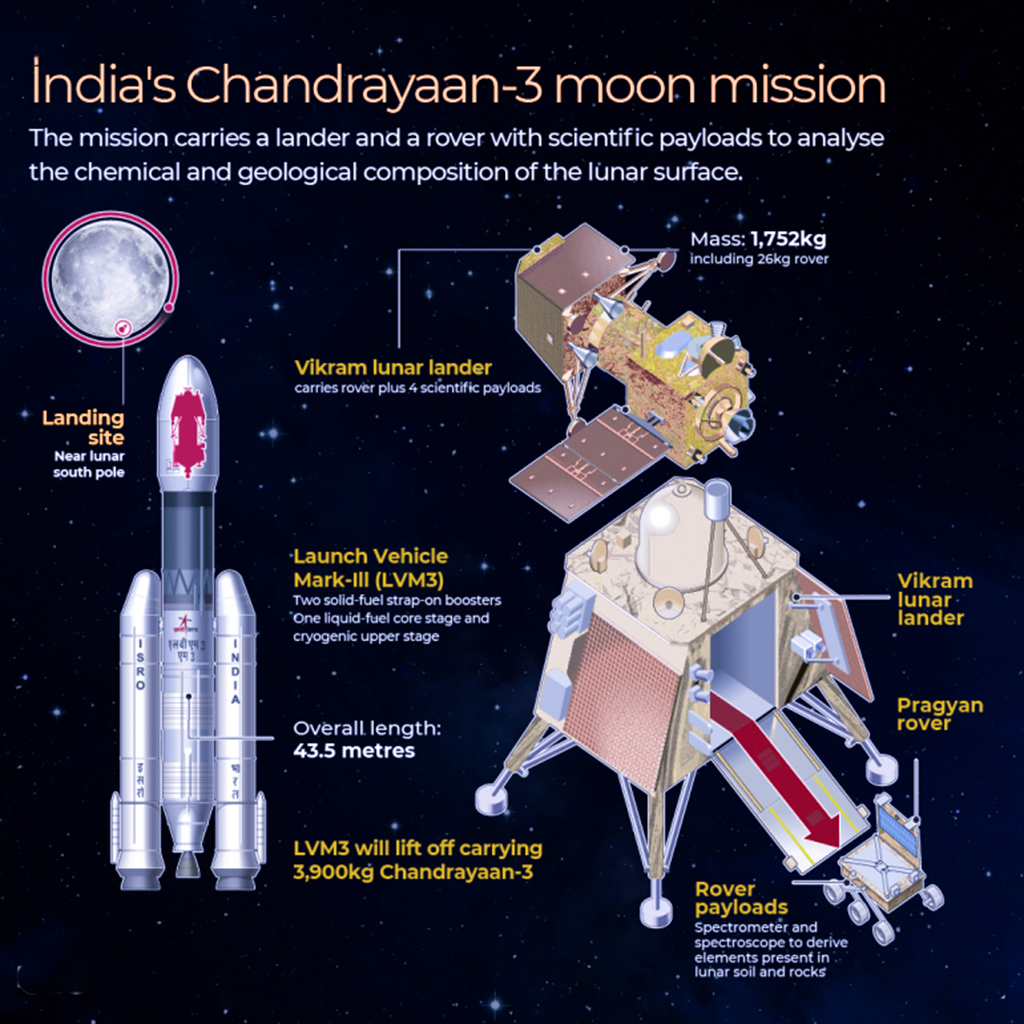India achieves a historic milestone as it successfully lands the Chandrayaan-3 spacecraft on the lunar South Pole.

In a momentous feat, India has marked a historic milestone by becoming the first nation to land a spacecraft on the moon’s southern pole successfully. The Chandrayaan-3 mission was designed to touch down in a region known for harboring water ice in deep craters.
The spacecraft, which took off from Andhra Pradesh, completed its journey by landing at the Satish Dhawan Space Centre’s mission control, where jubilant cheers erupted six weeks later. Prime Minister Narendra Modi observed the landing through a video conference call, commemorating the event with the display of the Indian flag. He emphasized that India’s lunar triumph is a global accomplishment and a source of inspiration for all.
The mission’s primary focus on water ice holds significant potential for future applications, including its use in fuel, oxygen, and drinking water, which could lay the groundwork for a permanent lunar settlement. This achievement comes after previous efforts by India and Russia, with Russia’s Luna-25 mission experiencing a crash and India successfully navigating the terrain of the moon’s southern pole.
On Wednesday, two Indian visitors, a lander called Vikram and a rover named Pragyan, made a successful landing in the moon’s southern polar region. This milestone, part of the Chandrayaan-3 mission, establishes India as the first country to achieve an intact landing in this specific lunar area and only the fourth nation in history to land on the moon.

After a moment of jubilation at the Indian Space Research Organization (ISRO) compound around 6 p.m. local time, S. Somanath, the ISRO chairman, confirmed, “We have achieved a soft landing on the moon,” adding, “India is now on the moon.”
India’s space program has already garnered immense pride among the public for its achievements, including lunar and Martian orbit missions and regular satellite launches into Earth’s orbit, all accomplished with considerably fewer financial resources than other spacefaring nations.
The success of the Chandrayaan-3 mission holds particular significance as it occurred during a pivotal period in India’s diplomatic endeavors, further solidifying its status as an ambitious and ascending power in South Asia.


